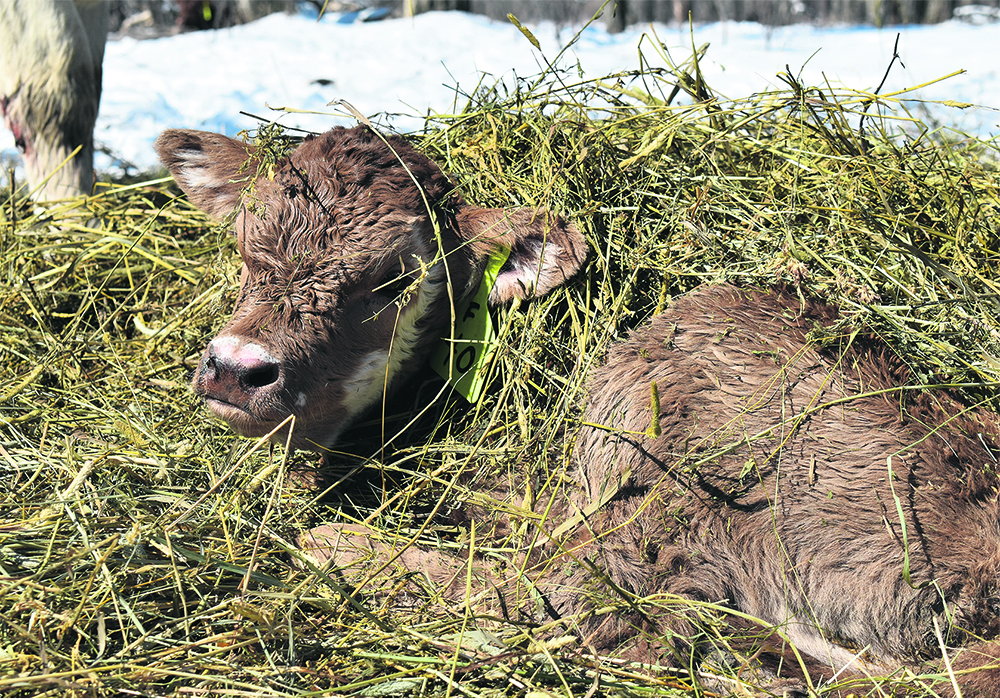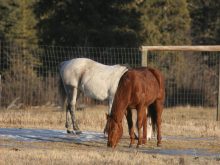Occasionally, our herd investigation team gets called out to look at a problem with calves being born with eye problems or appearing to have them shortly after birth.
These eye issues can manifest themselves as cataracts, micro-opthalmia (small eyes that haven’t developed fully) or a variety of other eye lesions such as retinal abnormalities or other inherited conditions.
There are really only three major causes of these types of eye abnormalities in newborn calves, so the challenge often comes down to sorting out the nature of the lesions. Then the diagnosis is usually easy.
Read Also

Beef cattle more prone to trace mineral deficiencies
The trace mineral status of our cows and calves is a significant challenge for western Canadian producers and veterinarians.
The three main causes of these eye problems include bovine viral diarrhea (BVD) virus, vitamin A deficiency and a variety of inherited congenital eye conditions.
The most common condition is cataracts in young calves caused by infection with BVD virus of the pregnant cow and fetus.
If a susceptible cow (unvaccinated and previously unexposed to BVD virus) becomes infected with BVD virus during pregnancy, several scenarios can occur.
If the infection occurs in early pregnancy (zero to 40 days), the result is early embryonic death and loss of the fetus.
If the infection occurs between 40 and 120 days of gestation, the fetus becomes infected with the virus and is born as a persistently infected (PI) calf. PI calves can be poor doers, but they can also look normal. They shed copious quantities of the virus and are often the source of BVD outbreaks if introduced into a herd.
If the BVD virus infection occurs between 120 to 180 days of gestation, this is the time period where it may affect the calf’s development and we see two major abnormalities.
The first is cataracts in the eye, which is basically an opacity in the lens of the eye that can impair vision.
The second condition that can be seen is a neurological one caused by defects in the cerebellum, a part of the brain near the back of the skull.
The cerebellum’s function is to co-ordinate and regulate muscular activity, so these calves will have difficulty walking, have exaggerated movements and show other nervous signs.
These two conditions, cataracts and cerebellar defects, can show up separately or in combination in some cases. If this condition is identified in your calves, some of your other calves may be at risk of being persistently infected and you may need to talk to your veterinarian about testing options to identify the PI calves.
The inheritance of a variety of congenital eye defects has been described in a number of cattle breeds, although there is probably much more to be learned about these conditions. Veterinary opthalmologists from our college have been involved in several scenarios in which they have diagnosed inherited eye lesions, such as cataracts in calves.
Coloboma is a term describing an eye that has been malformed and is missing tissue in various places. The pupils of these animals may be abnormally shaped. This has been described as an inherited condition in Charolais cattle.
Inherited cataracts have been described in Herefords and several dairy breeds.
The final cause of eye problems in newborn calves is vitamin A deficiency.
Vitamin A’s impact on the eye has been well documented for years in cattle. If growing cattle don’t receive enough vitamin A, they will often become night blind because of damage to the rods and cones of the retina.
Insufficient vitamin A can also affect bone growth and the optic nerve can become pinched, causing blindness as well in these growing animals.
However, if a pregnant cow is not receiving adequate vitamin A during pregnancy, the fetus can be affected as well.
Low levels of vitamin A in the pregnant cow during the very early stages of pregnancy can affect eye development.
These calves can be born blind with severe retinal abnormalities.
Dealing with these problems is relatively straight forward once a diagnosis is made.
BVD virus vaccination is a core vaccine for beef cattle in Canada and all cows should be vaccinated annually with a viral vaccine that contains BVD antigen. These vaccines are highly effective.
The goal with our vaccination program is to protect the fetus from becoming infected and so we want to make sure that our cows have high antibody levels going into the breeding season. Your veterinarian can give you the best advice about the timing and type of vaccination that would work best in your herd.
Dealing with inherited eye conditions might require some parentage testing of calves to sort out the cow lines or sires that are associated with the condition and making culling decisions based on those results.
Finally, making sure that the cow herd has adequate levels of vitamin A throughout the year can be done in a variety of ways. Vitamin A supplements can be part of your trace mineral package and you can also use vitamin A injectable products in cows and/or calves.
Vitamin A is a fat-soluble vitamin primarily derived from green forage in the ruminant diet. Deficiencies are more common in drought years and so you may want to consider additional supplementation strategies in years when there has been poor pasture quality and forages harvested in drought conditions.
If you are unsure about the vitamin and mineral status of your herd, your veterinarian can test a small sample of animals using blood or liver biopsies.
Vitamin A deficiency has also been associated with infertility, abortions, poor growth rates, stillborn and weak calves.
Calves get most of their vitamin A through the colostrum and so if cows are deficient at calving, consider injecting newborn calves with vitamin A as well.
Your veterinarian or nutritionist will help with advice that will work best for your particular feeding situation.
John Campbell is a professor in the department of Large Animal Clinical Sciences at the University of Saskatchewan’s Western College of Veterinary Medicine.















